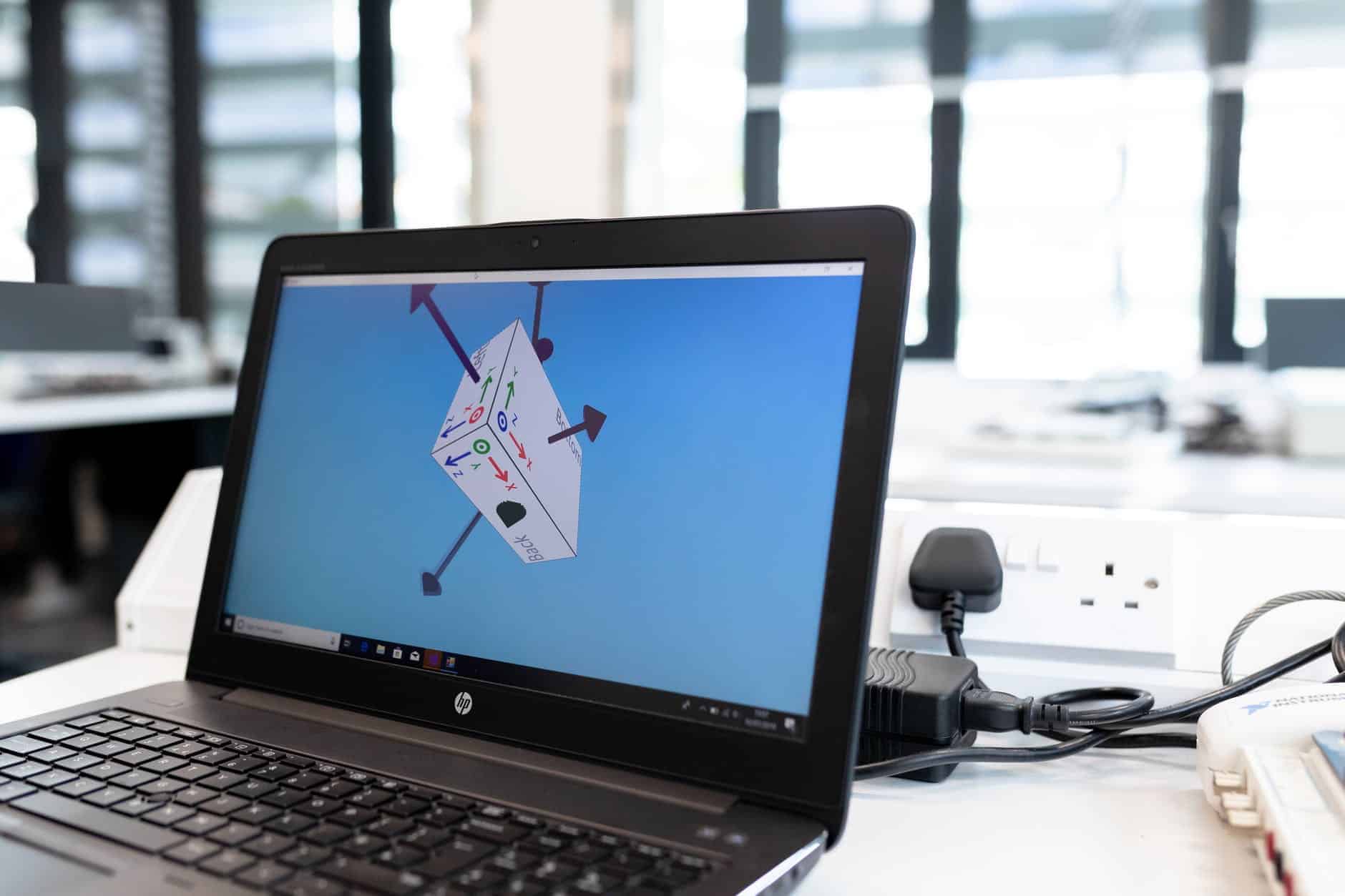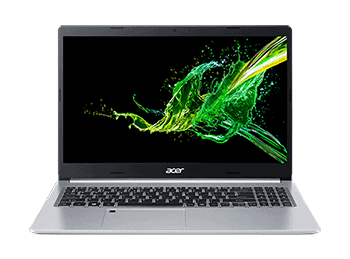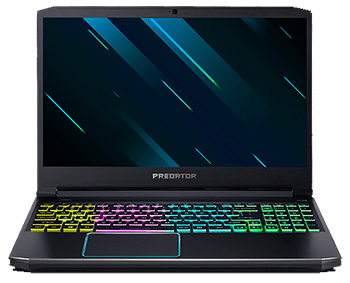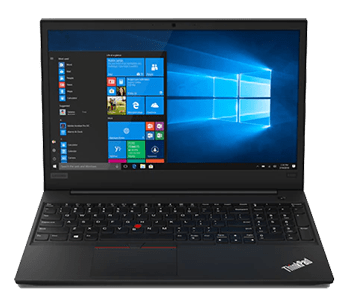
When looking for the best laptop for SolidWorks, there are a couple of things you need to keep in mind. The kind of device you’ll be purchasing might depend on whether you’re a student or a professional, or whether you’ll be using other engineering software alongside SolidWorks.
SolidWorks is demanding on its own, and if you’re planning to use it with other engineering software like AutoCAD or Revit, you’ll need a device that can handle all the rendering, complicated meshes, etc. with ease
This is why laptops for 3D Modeling software such as SolidWorks should have powerful processors and a dedicated GPU. You’ll also want a device with large storage capacity, and a good display.
Choosing which laptop would be ideal for SolidWorks is not an easy task considering all the different factors you’d need to think about, and that’s what we’re here to do. We’ve listed down our top 5 choices for the best laptop for SolidWorks.
Contents
5 Best Laptops for SolidWorks Compared
5 Best Laptops for SolidWorks Reviewed
1. ASUS VivoBook 15 [Budget Pick Without Photo Rendering]
The ASUS VivoBook collection is one of our top pics for SolidWorks, but only if you aren’t planning on using SolidWorks Visualize to do any photo rendering. The VivoBook is one of the more budget-friendly laptops that ASUS sells. Here’s more about it.
Running SolidWorks
The VivoBook is powered by an AMD Quad-Core Ryzen 7 processor. Because the VivoBook is a multicore laptop, you can expect your assemblies to render much quicker because the laptop has four cores to work with.
This laptop’s CPU also clocks in up to 4GHz, so you can expect SolidWorks to run fairly smoothly on this laptop.
With 8GB of RAM, you shouldn’t have too many issues running multiple programs with SolidWorks. This might pale in comparison to the other laptops on this list, it’s one of our top picks for users who are starting out. This is enough if you’re using the VivoBook to handle simple assemblies, renders, and simulations.
Fortunately, the VivoBook comes with a 512GB PCle NVMe SSD. This type of solid-state drive is the fastest you can get on the market right now, so you can expect your projects to load quickly without any hassle.
Other Benefits
While the 8GB of RAM the VivoBook 15 comes with is enough for simple assemblies, you don’t have to worry about that not being enough. The VivoBook’s RAM is expandable, so you’ll just need to purchase another RAM card and install it.
This is one of our recommendations for students, and as a student, you’ll probably need a multi-purpose laptop that’s easy to carry around as well. It can run SolidWorks and other office programs but is still lightweight and portable, so getting around campus for class won’t feel like a work-out.
The VivoBook offers up to 7-8 hours of battery life with light to moderate use and about 4 hours of battery when running heavier programs.
Drawbacks
The VivoBook has an AMD Radeon Vega 10, which won’t be able to handle SolidWorks right off the bat (but don’t worry, you can find guides on how to get past this wall). Despite having enough RAM to work with, because this laptop runs an AMD Vega 10, some of its RAM might be going towards its GPU instead.
The display itself is great but this laptop is prone to backlight bleeding.
Even if this laptop packs a punch for a low price-point device, when it’s placed under a heavy load of tasks, the fan can get quite noisy.
If you find yourself listening to music or streaming something as you work, the speakers are alright until you set them on the highest volume. The audio often sounds distorted and the laptop’s chassis rattles.
Pros
- Weighs a mere 1.7lbs
- It can be used as a laptop, tablet, and in studio mode
- Suited for professional tasks like designing, programming, etc.
- Battery lasts for 8-10hrs or more
- 1TB offers both excellent storage and speed
- Immersive 12.3″ Full-HD display
- 407nits of brightness for comfortale viewing even in sunlight
- Multiple peripherals available that add to the functionality
- Good cameras for video calling
Cons
- It is on the expensive side
- There’s not enough graphics power for gaming
- Slightly outdated
- No Thunderbolt ports
2. Razer Blade 15 [Best Overall]
One of the wonders of having a gaming laptop is that they’re powerful enough to run the latest AAA games and powerful enough to run the heaviest software too. The Razer Blade 15 is a great choice for any SolidWorks users who like to work hard and play harder.
Running SolidWorks
With a 10th Gen Intel Core i7 processor, which has 6 cores, you won’t run short of power on the Razer Blade 15. Producing and rendering much larger, complicated assemblies should go without a hitch on this laptop.
Its CPU also clocks in at up to 5GHz, so you won’t have to worry about any lag either. The Razer Blade 15’s power paired with its whopping 16GB RAM means you could easily be running SolidWorks alongside other engineering software without any trouble.
If you’re struggling with how long SolidWorks takes to start up and run all its features, the 512GB SSD in the Razer Blade is sure to impress you with its speed.
The current and all previous versions of SolidWorks are compatible with NVIDIA graphics cards, and the Razer Blade 15 comes equipped with an NVIDIA GeForce RTX 2060 graphics card with 6GB dedicated memory.
Other Benefits
The Razer Blade 15 has a 15.6-inch edge-to-edge display, which Razer has configured to give you high-quality visuals while using the laptop. Its display is calibrated well, so you can say goodbye to tired and strained eyes after a whole day of work.
If you aren’t impressed by its large storage, you can also easily upgrade this with another HDD. Pairing an HDD with an SSD is often done since you can keep your programs on the SSD for speed, and keep your files on the HDD, which have much larger storage capacities.
The Razer might not deliver the best battery when running heavy tasks or games, but it’s quick to charge, so as long as you have the charger with you, you don’t have to worry.
Don’t worry about trying to remember a password for this laptop. If you’re worried about security but have a terrible memory (I know I do), then the Razer also employs facial recognition upon startup or waking from sleep, so your files and programs are safe and secure, yet still convenient for you to access.
Despite being a powerful gaming laptop, it weighs in at less than 5lbs., so it’s also lightweight.
Drawbacks
If you’re particular about how colors show on your screen, some colors don’t translate very well on the screen of the Razer Blade 15.
Heavy gamers might have an issue with the placement of the keys on this laptop. While the keys themselves are comfortable to use, the arrow keys are in an awkward position, and it might be quite difficult to adjust to.
When using this laptop at its absolute best settings, don’t expect it to last longer than 2 or 3 hours. With moderate settings, you can probably get up to 5 hours out of it.
The Razer Blade 15 can handle the heaviest tasks, but this often sends the fan spinning wildly to cool the laptop down. If you’re wearing earphones while working or gaming, there’s no problem, but if you don’t use them to work or play, you’re sure to hear the fan spin.
This isn’t much of a deal-breaker, but the Razer has a glowing logo on its lid, which might not be ideal if you often bring your laptop out in a professional setting.
Pros
- Much more powerful laptop
- Lightweight and portable
- Expandable memory
- Quick to charge
Cons
- Most expensive laptop on the list
- Awkward arrow key placement
- Fan is quite loud when running intensive tasks
3. Acer Aspire 5 Slim [Budget Pick With Photorendring]
If the ASUS VivoBook was in an affordable price range, but you need to make use of SolidWorks Visualize, then the Acer Aspire 5 Slim might be the right choice for your modeling needs.
Running SolidWorks
We think the Acer Aspire 5 Slim is a great choice for students looking for a laptop that can run SolidWorks and SolidWorks Visualize. With a quad-core 10th Gen Intel i5 processor that goes up to speeds of 4.2 GHz, you can get simple and some intermediate assemblies done with ease.
The Aspire 5 Slim also has 8GB of RAM, which makes multitasking quite easy. If you’re attempting to create much larger assemblies, this might slow down a little, but this laptop is recommended for users looking to create simple assemblies.
It’s going to boot quickly thanks to its 512GB PCle NVMe SSD, which is the fastest on the market, and it’s also got a slot for an additional HDD if you’re looking to upgrade the storage.
With the NVIDIA GeForce MX250, the Acer is sure to handle your rendering tasks with ease. It’s also got 2GB of dedicated VRAM, so you can easily render in real-time. All versions of SolidWorks are supported by NVIDIA, so there are no issues with software compatibility.
Other Benefits
You can expect to have a Full-HD screen with the Acer Aspire 5 Slim, which has an integrated IPS panel, so you won’t have any problem working at different angles. For students or amateurs looking for a laptop for more than just SolidWorks, this is a great multi-purpose device that you can use for more than just creating simple assemblies.
This laptop is also much lighter compared to the other devices on this list (apart from the ASUS). It’s extremely portable and compact, so you won’t be lugging around a heavy device.
Drawbacks
One of the biggest issues we’ve found with Acer is that they have no reservations with pre-installed software on their laptops. You’ll have to spend the first few hours of running this laptop figuring out which software is needed and which was left on the laptop as bloatware.
We’ve mentioned that this is a great budget laptop, but that also means it can only handle simple (and a few intermediate) assemblies when running SolidWorks. While this is great for most students, professionals should be looking for something much more powerful.
Pros
- Budget-friendly laptop
- It has a speedy 512GB MCle NVMe SSD
- Light, compact, and portable build
- It can handle some intermediate assemblies
- Dedicated graphics card ensures quick, real-time render
Cons
- Not powerful enough to render complex assemblies
- Comes with lots of pre-installed software
4. Acer Predator Helios 300
Gamers looking for a slightly cheaper laptop with similar specs to the Razer Blade 15 won’t have to look any further than the Acer Predator Helios 300. Acer has once again delivered a powerful device for users on a much tighter budget.
Running SolidWorks
The Predator Helios 300 packs a punch with its 10th Generation Intel Core i7 processor, which clocks in at a maximum of 5GHz. Multitasking won’t be a problem on this device, especially when you pair its 6-core processor with 16GB of RAM.
Of course, when running SolidWorks, you’re going to need it to render the assemblies you create. Fortunately, for users working with much larger and more complex assemblies, the Acer Predator Helios 300 can deliver quick real-time render thanks to the 144GHz screen refresh rate.
Speaking of its screen and display, the Acer Predator Helios 300 has an NVIDIA GeForce RTX 2060 graphics card installed, which runs all versions of SolidWorks with ease.
A solid-state drive is a need if you want to run SolidWorks without a hitch, and this laptop comes with a 512GB SSD. The SSD installed on this laptop is also a PCle NVMe SSD, which is the fastest one out on the market. This doesn’t just make it quick to start and run, but also means it’s less likely to break.
Other Benefits
You’re probably thinking a laptop this powerful is bound to overheat at some point. Acer has installed an all-metal AeroBlade 3D fan to ensure your laptop won’t run hot when you’re using it to create more complex assemblies (or play your favorite game on the best graphics setting possible).
The Predator can run up to 6 hours long. While the battery life doesn’t sound fantastic at first glance, it’s quite impressive considering you’re running some heavy programs on it.
If 512GB isn’t enough for you, there’s a slot inside the Acer that allows you to fit in another HDD or SSD, so you don’t have to worry about carrying a portable hard-drive as well.
The steel finish of the Acer Predator Helios 300 paired with its sleek blue and black accents make for a good-looking laptop. While most gaming laptops have a more conspicuous black and red design, the blue makes it look much more professional.
Drawbacks
Like we mentioned in our previous entry, Acer is notorious for its laptops coming with lots of pre-installed software, and the Predator series is no exception. But once you get your laptop set up and uninstall any unnecessary software, you won’t have to worry about it.
With the amount of power this laptop gets access to, it’s going to have to stay cool. Despite it having one of the best fans installed, if you’re running extremely heavy programs and tasks, you might be bothered by the sound of the fan spinning.
Pros
- It can complex assemblies on SolidWorks
- Real-time render is possible
- High-speed SSD for quick start-up and more durability
- Stays cool when performing heavy tasks
Cons
- Fan runs quite loudly when it gets hot
5. Lenovo ThinkPad P52s
Lenovo’s ThinkPad P series has made it on the list of certified laptops for SolidWorks, and there’s no reason why it shouldn’t. It’s always been a powerful staple for any professional who carries their work around with them.
Running SolidWorks
It’s got a lot of processing power thanks to the 8th Gen Intel Core i7 processor. With a quad-core processor that clocks in speeds up to 4GHz, you won’t have a problem running even the most complex assemblies on the ThinkPad P52s.
The ThinkPad P52s also has the most impressive storage on the devices listed here, with a whopping 1TB SSD, which you wouldn’t normally find in other laptops at this price-point. There’s no need to worry about not being as productive at work. Multitasking with the ThinkPad is extremely smooth since it’s got 32GB of RAM to work with.
For laptops in this price range, you would be hard-pressed to find something with these specs.
The NVIDIA Quadro P500 is one of the best graphics cards you could get and is what SolidWorks recommends professionals to get to run their software. Not only is it one of the most powerful GPUs on the market, but it’s also got a dedicated 2GB VRAM, so your renders are sure to go quickly.
Other Benefits
The Lenovo ThinkPad has a fingerprint scanner, which beefs up the laptop’s security without having to worry about remembering your passwords.
It’s also got a full-HD, edge-to-edge display with an IPS panel integrated into it, so you can work while viewing the screen from just about any angle. You’ll get above-average color reproduction on its display.
Because the ThinkPad was built for professionals who work with heavy, processing, and graphics-intensive software (AutoCAD and Revit, for you engineers), it’s also got great a great thermal management system.
Best of all, with the power and specs this laptop has, it’s extremely lightweight, weighing in at just 4.3lbs, so you can take your work with you on-the-go.
Drawbacks
The only drawback we’ve found with the ThinkPad P52s is that it has quite a bad webcam, so you won’t want to use it for any video calls.
Pros
- A SolidWorks certified laptop
- It can handle graphics-intensive tasks
- Great thermal system to keep cool
- Comes with a fingerprint scanner
- Runs AutoCAD and Revit smoothly
Cons
- Poor webcam
- Average battery life
- Costs over $1000 thus for professionals
Laptops for Other 3D Software:
Best Laptop for SolidWorks Buying Guide
If you’re not a tech-savvy person, you might have a hard time understanding what all these specs mean, and why you need them. Well, I’m here to make it much easier for you. In this section, we’re going to be talking about each specification you’ll need to worry about when looking for a laptop for SolidWorks.
Don’t worry, you won’t have to take down notes for every little detail. We’ll leave you a little “TL;DR” at the end, to summarize everything.
You’ll need to know how much computer-aided engineering (CAE) you’ll be doing, how large the assemblies are if you’ll need it for key shot rendering, and what exactly you’ll be rendering.
CPU
Your laptop’s CPU has two predominant features that you’ll have to take into consideration: the number of cores, and its clock frequency. You’ll have to worry about how many calculations it can make, and how fast your it can run.
CPU Cores
A CPU is made of individual processors, and the number of those calculators affects a couple of functions and tasks in SolidWorks; most importantly: rendering and simulation.
The more cores your laptop has, the quicker you can render your models. If you rely on CPU-based rendering, they can take up to 10 cores. You can also run SolidWorks simulation on multiple cores. The software can benefit from a laptop with multiple cores because they can work simultaneously.
Frequency
This tells you how quickly your laptop can perform calculations and is measured in GHz. Since SolidWorks uses parametric modeling (a linear modeling process), it relies heavily on your CPU’s frequency.
Simply put, the higher the frequency, the better SolidWorks will perform on your laptop.
Multitasking
Overall, you’ll want to look at multicore laptops. You’ll probably be running other software in the background alongside SolidWorks, so having a multicore CPU will help you run them all without pulling any power or speed away from the core that’s running SolidWorks.
To top it off, other aspects of SolidWorks takes advantage of a multicore CPU. [EXPAND]
RAM
This stands for ‘random access memory’ and is responsible for how well your laptop can handle multiple windows at the same time. Most laptops on the market now fall in between 8GB up to 64GB.
To put it simply, the more RAM you have, the more windows you can have open at the same time. Your laptop can handle a much larger assembly size while modeling with bigger RAM.
If you’re only using SolidWorks to create simple parts and drawings, then you won’t need much RAM; somewhere between 4GB to 8GB should be enough for simple models, renders and simulations.
For much more complex simulations, models and renders, you’ll need more RAM. Large amounts of data need to be loaded while doing calculations, and lacking the RAM to handle these calculations means your laptop will have to draw memory from the hard-drive, which can cause your laptop to run much slower than normal. If you work with larger assemblies, aim for a laptop with 16GB to 32GB, or more.
GPU
Make sure you know what kind of graphics card you have installed on the laptop you’re considering buying if you’re planning to run SolidWorks. You can’t change a graphics card in a laptop, and if you’ve got an unsupported card, SolidWorks won’t run properly (or even crash).
You’re going to be stuck with the graphics card for the entirety of your laptop’s life, so making sure it’s good enough to handle your models, and possible future software updates are critical.
Keep in mind that the most common problem with graphics cards is in their driver; the latest update might not be the best driver to use, because SolidWorks might not be compatible with it.
Storage
This is fairly straightforward; you’ll need a lot of storage to store your files on it. If you’re looking for a laptop for SolidWorks, you’ll be looking at mid-range to upper-range laptops, which come with either a 1TB HDD or an SSD between 256GB-512GB.
The real issue boils down to whether you want a budget-friendly hard-disk drive or a more costly solid-state drive.
HDDs & SSDs
While the size difference between a 1TB HDD and a 256GB SSD is massive, there’s a reason why we recommend laptops with an SSD installed.
Hard-disk drives run on mechanical parts and measure their speed at RPM. The mechanical parts in an HDD make them more prone to breaking down compared to an SSD. That’s because SSDs are made with electronic parts.
Solid-state drives have become much cheaper over the last few years and are now a standard in most new laptops. The slowest SSD also runs much quicker than the fastest HDD. While HDDs are still much cheaper, SSDs are much better for speed and reliability.
If you’re concerned about the lower storage capacity of an SSD, some laptops allow you to upgrade by installing an additional HDD. We recommend that you keep your SSD hold your laptop’s operating system, and your HDD keeps your files stored.
Best Laptop for SolidWorks FAQ
Q1. What kind of CPU do I need to get for SolidWorks?
That all depends on what you’re using SolidWorks for. If you’re doing a lot of designing, drafting, and modeling, the processor with the highest clock speed is what you should be looking at.
Students looking for a powerful laptop to run SolidWorks should look at Intel Core i5 and i7 models with a U or HQ label. Whichever you pick should have the highest clock speed. For professionals who work with larger assemblies, look for a laptop with an 8th Generation Intel Core i7 with an HK label if you can afford it.
Like we said earlier, the more processors you have, the better. Running other programs simultaneously with SolidWorks is going to eat up a lot of processing power, so having a multicore laptop that can handle all your tasks is a must.
Q2. Which graphics card is best for SolidWorks?
This all boils down to the kind of projects you’re doing with SolidWorks.
Mid-range consumer cards are slightly tricky to deal with, but if you know what you’re doing, they’ll be just fine for students and amateurs. For professionals, a high-end graphics card or workstation cards are best to make sure your laptop can handle complex and large assemblies.
But being on a tighter budget doesn’t mean you can’t have a device that can handle SolidWorks. Consumer cards are great for students and amateurs, and SolidWorks offers some support in handling these graphics cards. As long as you aren’t doing intensive simulation, are limited to drafting and modeling, and rendering simpler assemblies, these do just fine.
Consumer cards aren’t great for professionals dealing with assemblies with a lot of parts. Workstation cards are much easier to deal with, but make sure they’re compatible with SolidWorks. You can check this on their website. Spending more on your graphics card can help you in the long run if you’re using animations and photorealistic rendering.
Q3. Should I go for NVIDIA or AMD?
Are you going to be photo rendering with SolidWorks Visualize?
If you aren’t planning on using this feature, then AMD cards are fine. Visualize can still run on an AMD card, but they’ll eat up your CPU instead. Keep in mind that it’s only SolidWorks Visualize 2020 that supports AMD Radeon Pro graphics cards.
All versions of SolidWorks Visualize are compatible with NVIDIA, so if you’re running an older version, then look at NVIDIA cards. The larger your assembly, the more vRAM you’re going to need, so professionals should try to get as much of it as possible.
Q4. Why should I get a laptop with an SSD instead of an HDD?
We mentioned that most HDDs come in larger sizes than SSDs, but the advantage of having an SSD in your laptop instead of an HDD lies in its speed.
Your laptop’s storage speed determines how much time you’ll be spending waiting for SolidWorks to boot up, and the faster it can run, the better.
Professionals dealing with complex models should get the fastest possible SSD on the market (a PCIe NVME SSD), while amateurs or students should still aim for an SSD, but a much slower model (like the SATA III).
Q5. What if something goes wrong?
As long as you’ve followed our guide in purchasing a laptop for your SolidWorks needs, then you shouldn’t have a problem.
But if you do, SolidWorks has a fantastic customer support system in case you run into any bugs. They also have a very active online community that’s eager to help you out.
Their website offers a wide array of options to help you get the hang of SolidWorks, from a list of FAQs to tips and tutorials, to access to a vast network of other SolidWorks users and additional resources so you can get the most out of SolidWorks.
Conclusion
There we have our top 5 pics for the best laptop for SolidWorks. We’ve mentioned in our recommendations and FAQ that SolidWorks is an extremely versatile software that’s used by students and professionals alike.
If any of these laptops work for you for SolidWorks, let us know in the comments down below. Of course, there are other laptops out on the market that are also great choices.
If you’ve found our guide helpful, but decided on using another laptop instead of the ones listed above, let us know down below too!
Good luck, and happy assembling!










